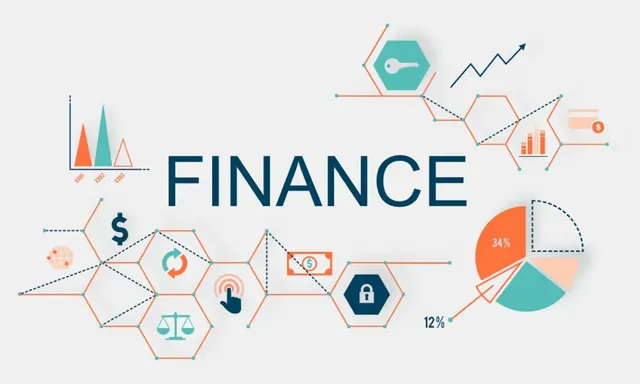Financial Innovation and Transformation Brought by Minimalism
In 2008, Satoshi Nakamoto released a paper titled Bitcoin: A Peer-to-Peer Electronic Cash System, which introduced a revolutionary online payment system. At the time, no one had imagined that the 9-page paper would go on to catalyze a trillion-dollar industry and revolutionize finance.
Traditional Finance: High Costs and High Thresholds
Finance, a term that comes with a long history, aims to improve the efficiency of capital utilization and encompasses a series of economic activities that allocate capital from investors to those seeking investments via market tools. Banks, for instance, collect deposits and lend money, providing idle funds (i.e., deposits) for those in need, and the same also applies to corporate financing and initial public offerings (IPOs).

In the process of capital circulation, idle-fund providers have the chance to earn returns such as deposit interest and profits from the sale of stocks/equities. As a result, plenty of activities in financial markets focus on investment and financing. Although many intend to venture into financial markets to make investments or raise funds, the majority of the global population is excluded from traditional finance.
Making investments in traditional financial markets comes with a high threshold. Investing in the secondary market, for example, requires a bank account that supports the market. Moreover, users also have to meet requirements such as identity verification and minimum deposits. According to the World Bank, over 1.7 billion people worldwide, or more than 20% of the population, remain unbanked, which denies them access to financial services.
Even in the United States, where the financial system is better-established, tens of millions of people still don’t have a bank account. After all, even the most basic traditional financial services can be expensive for retail investors. For instance, fees and requirements like account opening fees, credit card annual fees, and minimum deposits keep many low-income customers out of traditional financial markets.
Primary markets come with even more entry barriers. In the early stage, most players are private equity and venture capital firms. It is extremely challenging for retail investors to join primary markets, meaning that they miss out on many great investment opportunities. This exacerbates the issue of wealth inequality. The Pareto principle is proven right: today, the top 20% of the global population control over 80% of the world’s income and wealth.
The same also applies to financing markets. In traditional finance, companies must go through a complex process to go public. Moreover, only large institutions such as investment banks and trust companies are allowed to provide underwriting services. What this means is that companies seeking funds cannot issue shares directly to retail investors and have to go to these centralized institutions. To make matters even worse, intermediaries like investment banks and VC firms have not improved capital efficiency; instead, they have created expensive intermediary costs.
Bitcoin and Blockchain: A Quite Financial Revolution
In 2008, the world was hit by a massive financial crisis. As a result, banks and companies went bankrupt, and stock markets collapsed. During the crisis, people noticed that the legacy financial system managed by centralized institutions is not as stable as they expected. Retail investors were unaware of the bad debts facing banks. They had no idea that companies were misusing their fund to seek returns from risky investments. After the market crashed, ordinary investors could only file claims and wait for years. Eventually, only a few of them were compensated.

Bitcoin was born against such a backdrop. On January 3, 2009, Satoshi Nakamoto mined the genesis block, which contains a headline from The Times, “The Times 03/Jan/2009 Chancellor on brink of second bailout for banks.” Through the message, the father of Bitcoin mocked the traditional financial industry, where centralized banks control the money supply and determine if the funds of retail investors would appreciate or depreciate, and implied that the modern financial system is just a game for the financial elites.
Bitcoin and blockchain were born to address these inequalities. The crypto space offers a decentralized, open, free, and transparent financial market, which eliminates the complex intermediary processes in traditional finance. Crypto makes it a lot easier to invest, raise funds, and pay.
With Bitcoin, the 1.7 billion unbanked population could easily make online payments, including cross-border payments that can be processed in no time, and it only takes less than a minute for them to create a crypto wallet. The crypto market based on blockchain technology provides accessible investment opportunities for more retail investors who are excluded from traditional finance. For example, on CoinEx, a global crypto exchange, users get to create an account for free and trade cryptos at any moment, even with just a few dollars in their account.
Providing a global, open, and easy-to-use innovative financial market, blockchain and crypto technology have revolutionized finance. Clearly, the crypto space is not just a party for the elites. On the contrary, it is becoming increasingly accessible. The industry is witnessing countless miracles, with significantly reduced financing costs and investment thresholds, as well as improved capital efficiency. It is making progress that’s impossible in traditional finance.
Minimalism: The Driving Force of Universal Finance
With its low threshold and costs, the crypto market has presented exciting opportunities to retail investors. But not all platforms in the market have embraced this idea. As the crypto industry evolves, we have seen many pro-only platforms that continue to pile functions upon functions. However, from the perspective of financial service providers, helping beginners complete their first crypto transaction is no easy task, and some product designs may drive away retail investors.
From the concise yet insightful Bitcoin white paper to the simple design of decentralized projects, we can tell that ease of use has always been a key principle of the crypto industry. The same should also apply to crypto products: ideally, products should be practical and user-friendly.
In this respect, crypto platforms hold different views. While most platforms in the industry try to serve professional investors, CoinEx advocates minimalism. The exchange provides beginners with simple guides, comprehensive help documents, focused page interactions, and intuitive visual guidance to minimize the necessary operations, allowing users to buy, sell, and invest in cryptos in the most convenient way possible.
CoinEx’s smooth experience stems from its product philosophy. For instance, the exchange mentioned in its blog that before developing a new feature, they’d always consider whether users actually need it. The CoinEx team believes that many products out there no longer provide convenience but have instead become a burden to users. Members of the team constantly remind themselves to avoid complexity and stay committed to practicality and ease of use. Today, CoinEx has met that goal as many of its users are newcomers to crypto.
Though crypto products are becoming increasingly diverse and complex, there are still players like CoinEx that remain restrained and insist on “Making Crypto Trading Easier”. With easy-to-use product design, simple investment operations, and considerate customer services, CoinEx respects every user, reduces their workload, and makes it easy for retail investors to get started with crypto trading.
Globally, many users still cannot access convenient financial services, and there is a long way to go before we can achieve universal finance. That being said, in a crypto market that advocates minimalism, the cumbersome intermediary processes will gradually disappear, thereby enabling direct cooperation between investors and project teams. This trend will shift the power from elites to more retail investors, effectively improving capital efficiency. Meanwhile, more people will be able to profit from crypto finance, addressing wealth inequalities with crypto.